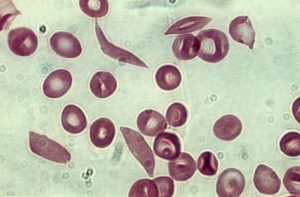Machine-Learning Techniques Predict Pain in SCD

Pain is the most common complication and cause of repeat hospitalizations in people with sickle cell disease (SCD). In addition to being incapacitating for the patient, pain can be a precursor to other serious complications, making pain management a critical component of care. However, because of the subjective nature of pain and the difficulty of measuring pain outside of intermittent clinic visits, it is often challenging for clinicians to make accurate pain assessments.
Recent work led by Duke investigators suggests that it may be possible to employ machine-learning techniques to predict patients’ self-reported pain scores based on physiological measures. In the study, published in Smart Health in February 2018, investigators developed a model with the ability to predict patients’ pain scores on an 11-point scale with an accuracy of 0.578 at the intra-individual level and 0.429 at the inter-individual level. Importantly, accuracy further improved to 0.681 when considering a clinical scale of no pain, mild pain, moderate pain, or severe pain.
The ability to predict a patient’s pain based on their vital signs is a valuable clinical tool, says the study’s senior author, Nirmish Shah, MD, a hematologist at Duke. “We’re finding that statisticians can use complex algorithms to help us categorize patients based on their pain level,” he explains. “That helps us feel more confident just looking at a patient’s vital signs and saying, ‘ok, I can confirm you have severe pain; I need to intervene,’ or, 'your pain seems to have improved; I should hold off on giving you that next dose of opioid.’”
The study was based solely on data collected while patients were in the hospital, Shah notes. The next step will be to incorporate more continuous data collection using the TRU-Pain system (Technology Resources to better Understand Pain)—a system developed by Shah in 2014 that combines a mobile application with wearable technology to measure both pain and vital signs.
TRU-Pain has already helped Shah monitor patients’ pain remotely and provide more support, while helping them avoid repeat hospitalizations. “Most of these patients are in pain at home, trying to self-manage,” he says. “They don’t want to come to the hospital; they want to be as functional as possible. We’ve already had a lot of success with having patients respond to us via the app and being able to give advice remotely.”
By using the TRU-Pain system, Shah and his collaborators hope to build on the work and construct a real time pain prediction model that can support clinicians in decision making and identify potential complications as early as possible. “The app gives us a wealth of information about what a patient’s body is doing from second to second—we’re not restricted to the data we collect when the patient comes into clinic,” Shah says. “We’re hoping that our work will help us better understand and predict pain so that we have a better idea of how to best help our patients with SCD.”